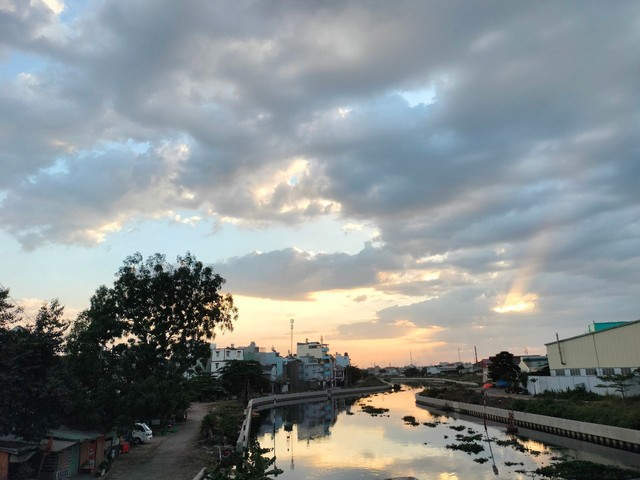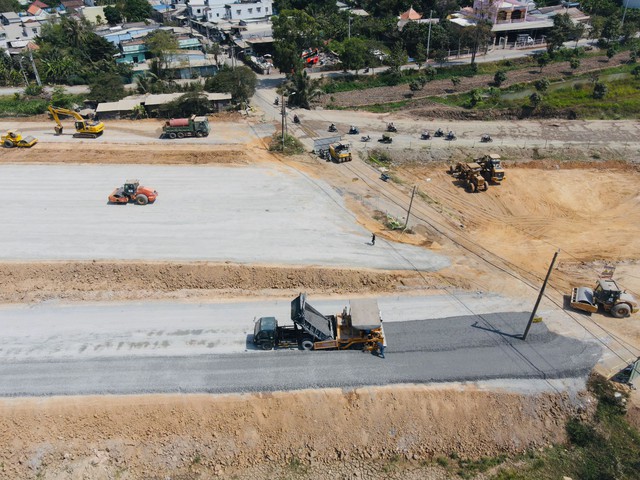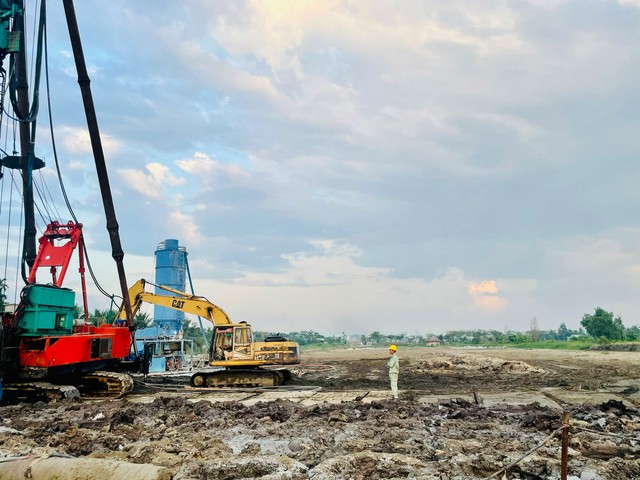Shortage of Sand Hinders Project Progress
Multiple large-scale projects and additional reclamation in the Mekong River Delta region have stopped supplying sand, resulting in a sand shortage.
Risk of Delay
One of the key projects currently awaiting a source of sand is the Ho Chi Minh City Ring Road 3 project. Started in June 2023, the project is currently constructing tunnels, road foundations… However, due to a shortage of sand, the progress of road construction is not as expected.
The Ho Chi Minh City Department of Transport stated that many large projects, longitudinal and transverse expressways in the city and neighboring provinces, have been simultaneously implemented while some sand mines in the Mekong River Delta region have stopped supplying sand. This has resulted in a scarcity of sand, affecting the construction progress of the Ho Chi Minh City Ring Road 3 project, especially for contracts involving large-scale soil treatment.
To overcome the difficulties, at the end of December 2023, Vinh Long, Tien Giang, Ben Tre, Tra Vinh, and Dong Thap provinces agreed to support the filling of sand for the Ho Chi Minh City Ring Road 3 project, as well as consider licensing the exploitation of multiple sand mines. However, the source of sand for the project has not been determined as most mines have expired permits and local authorities prioritize supplying sands for their own province or other expressway projects.
In addition to the Ring Road 3, the Tham Luong – Ben Cat – Rach Nuoc Len canal improvement project is about to enter the peak phase of treating weak soil, and it is also in need of sand for reclamation.

Regarding this project, Mr. Nguyen Hoang Anh Dung, Deputy Director of the Urban Infrastructure Investment Project Management Board, the investor, said that the length of the road on both sides of the canal is about 64 km, estimated to require 1.8 million m3 of sand for filling the ground. However, the supply source is limited as major mines in An Giang and Dong Thap are not granted permits due to legal issues.
Similarly, the report from the investor of the Ben Luc – Long Thanh expressway project shows that the project is facing difficulties in sourcing sand. The remaining volume of sand needed for 8 contract packages is about 1.2 million m3. However, due to the local restrictions on using sand from their own mines for projects within their province, the Ben Luc – Long Thanh expressway has to execute the construction with caution while waiting for the sand supply.

Exploring Alternative Solutions
The shortage of sand for reclamation is a common problem in many large projects nationwide. To minimize the impact on project schedules, many investors propose using sea sand as a replacement.
The management board of the My Thuan Project, the investor of expressways in the Mekong River Delta, stated that they have tested the use of sea sand as a replacement for reclamation sand in the Bac Nam Hau Giang – Ca Mau expressway project. So far, monitoring results have shown no abnormalities. The My Thuan Project Management Board has also introduced contractors to sand mines in Tra Vinh and Soc Trang provinces for reference.
Proposing a solution to the sand scarcity, Dr. Pham Viet Thuan, Director of the Institute of Economics – Resources and Environment of Ho Chi Minh City, believes that all projects experiencing delays due to a shortage of sand for filling weak soil will continue to face this problem for the next 5-10 years. Therefore, to ensure feasibility in construction, changing the project design from using sand for foundations to using dry bridges is appropriate and is a worldwide practice. Previously, the Ho Chi Minh City – Trung Luong expressway project was completed, with mostly dry bridges.
For ongoing projects such as the Ring Road 3, adjustments can still be made to ensure project progress and quality. While for upcoming projects, investors and design consultants need to study design changes and construction solutions. “By doing so, the new city can achieve the goals set out in Resolution 98/2023 of the National Assembly, not only developing infrastructure but also connecting regional infrastructure in the context of national industrial development,” Mr. Pham Viet Thuan commented.
The management board of transportation construction projects in Ho Chi Minh City, the Ministry of Transport, and the Ministry of Natural Resources and Environment are urged to issue regulations allowing the general use of sea sand in road construction and reducing the pressure on river sand supply, according to the Ho Chi Minh City Urban Traffic Management Board.
Positive Signals
Mr. Luong Minh Phuc, Director of the Management Board of transportation construction projects in Ho Chi Minh City, the investor of the Ho Chi Minh City Ring Road 3 project, stated that the entire project needs 9.3 million m3 of reclamation sand. Specifically, about 6 million m3 of sand is needed for soil treatment work in 2024, and Ho Chi Minh City alone requires 4.5 million m3 of sand.













